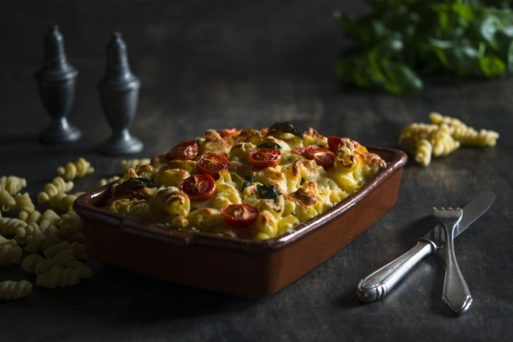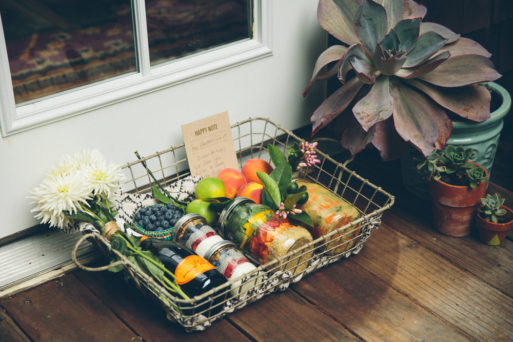Our Tip of the Month
When a loved one dies, grief is a heavy burden to bear. We often find ourselves overcome by grief and overwhelmed by the responsibilities of arranging funeral services, and even receiving condolences from family and friends can be exhausting. During this time of profound grief, everyday activities can often take a back seat to more important matters, and it’s great to have help and support from those that care about us to get through the immediate aftermath of death.
One way we offer this love and support to our grieving families and friends is with food. Bringing food to the families of the deceased is a tradition in many cultures, and a great way to offer comfort when someone needs it most. The result of this is often what’s known as “the casserole brigade,” where everyone you’ve ever known and their long-lost cousins bring their best comfort-food recipes, often in copious amounts.

The Challenges of Feeding the Grieving
While this is a hugely empathetic act, and certainly one to be grateful for, the end result can often be an unintended source of stress for those in mourning, as well as a big waste of great food. If you’ve been in the home of someone mourning the loss of a loved one, you’ve likely seen counter tops and dining tables covered with large dishes of everything from lasagna to chocolate-covered strawberries.
This is a welcome gesture, especially as people are often filing through the home in these times, and it takes the pressure of hosting off the shoulders of the bereaved. The problems arise when the crowds thin out and what’s left is a mountain of food that has to be stored or disposed of. Most of us don’t have the refrigeration to store large amounts of food, so much of it goes to waste, which is a real shame when someone has put so much love into a gesture so filled with empathy.
How-To Suggestions: Meal Train
Fortunately, there are strategies for avoiding this situation. The most effective way is through coordinated delivery of meals, often referred to as a “meal train.” The formula is simple: Using social media and specially designed, free websites like the aptly named Meal Train, friends and family of the bereaved schedule daily meal deliveries that help us get through our times of grief without overwhelming us or resulting in waste. This technique has the added benefit that it allows us to let people know what foods we really like, when we’ll need the meals, and also if we have food allergies or special dietary needs. These sites make the task of coordinating meal deliveries relatively easy, and give those wanting to help more flexibility around when and what they can do.

Credit: cherish.us
When someone has died, when someone has an illness or surgery, or even when someone has had a new baby, can all be times when planning and preparing meals is just too much, and we often need a little help. Luckily, family and friends will always be there to pitch in, and by organizing meal trains this can be done efficiently, effectively, and in a way that helps lighten the load during these stressful events. If someone you know could use help with meals, reach out to others in your circle and start a meal train. It’s the best way to help with everyday life in a way that’s not overwhelming or wasteful, and it’s a lot easier with a team and a schedule to make it happen.

 Our Monthly Tip: Organizing a Meal Train for Those in Grief
Our Monthly Tip: Organizing a Meal Train for Those in Grief


 Debating Medical Aid in Dying
Debating Medical Aid in Dying
 “Help Me, Helen”
“Help Me, Helen”















